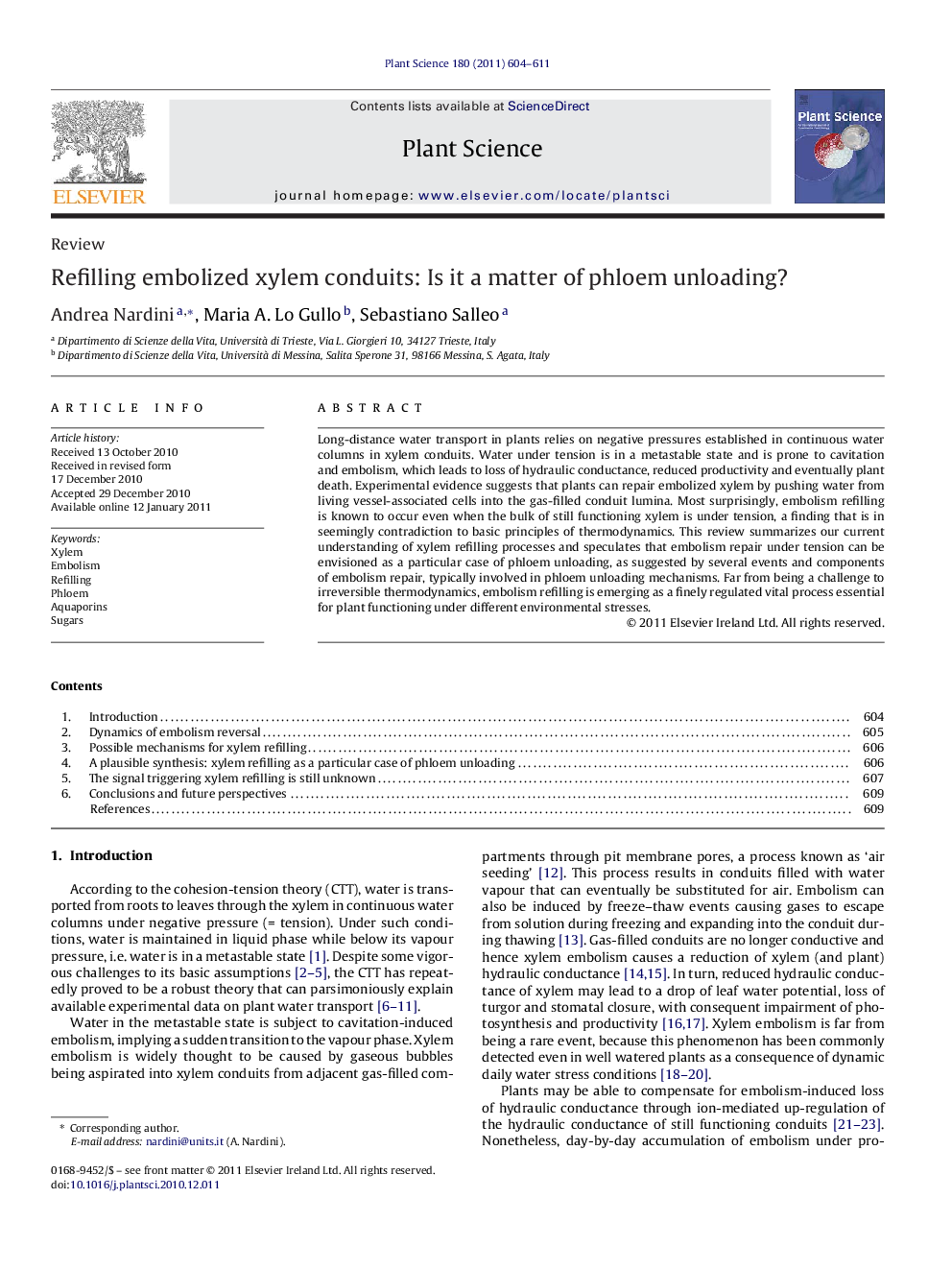| Article ID | Journal | Published Year | Pages | File Type |
|---|---|---|---|---|
| 2017936 | Plant Science | 2011 | 8 Pages |
Long-distance water transport in plants relies on negative pressures established in continuous water columns in xylem conduits. Water under tension is in a metastable state and is prone to cavitation and embolism, which leads to loss of hydraulic conductance, reduced productivity and eventually plant death. Experimental evidence suggests that plants can repair embolized xylem by pushing water from living vessel-associated cells into the gas-filled conduit lumina. Most surprisingly, embolism refilling is known to occur even when the bulk of still functioning xylem is under tension, a finding that is in seemingly contradiction to basic principles of thermodynamics. This review summarizes our current understanding of xylem refilling processes and speculates that embolism repair under tension can be envisioned as a particular case of phloem unloading, as suggested by several events and components of embolism repair, typically involved in phloem unloading mechanisms. Far from being a challenge to irreversible thermodynamics, embolism refilling is emerging as a finely regulated vital process essential for plant functioning under different environmental stresses.
Research highlights▶ Xylem cavitation is a common occurrence in plants. ▶ Xylem cavitation and embolism lead to loss of hydraulic conductance and reduced plant productivity. ▶ Embolized conduits can be refilled by plants even when the bulk of xylem is still under tension. ▶ We discuss the possibility that xylem refilling under tension is a special case of phloem unloading.
